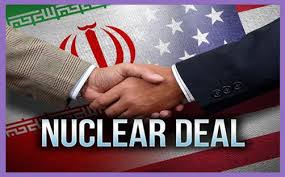Alternative Futures of Iran Nuclear Deal After the US Exit
Fuente: Journal Futures Studies Digital, http://jfsdigital.org/2018/07/28/alternative-futures-of-iran-nuclear-deal-after-the-us-exit/#respond
On 8 May 2018 in Washington D.C. Trump announced that the US withdraws from the JCPOA. It is also known as the Iran nuclear deal that was negotiated during Obama administration. The alternative futures that might emerge can be developed in four key scenarios and we can follow the direct and indirect paths of impacts using a tool known as the Future Wheel.
The nuclear deal with Iran cancels altogether. When every other partner of the deal declares its withdrawal, the immediate consequences are the highest level of sanctions against Iran and in particular the Islamic Revolutionary Guard Corps (IRGC). As a result, more sudden shocks will happen to the exchange rate of the local currency compared to the hard currencies including US dollar. Cost of production will rise because of inflated dollar price, decrease of liquidity for industries, and the rise in uncertainty and risks. This will only take the price of goods to even higher records and the inflation surges. In such circumstances the loans in arrears will also increase in the banking industry.
Intensified sanctions against the IRGC by the world powers in coordination with the US to limit its economic and political clout outside of Iran, for example in Syria, Lebanon, Iraq, and Yemen, will make it more likely that it will develop its economic activity back inside the country. This big picture is shown in Figure 1.

Figure 1: The Futures Wheel for Cancellation of the Deal
The EU stays despite the US withdrawal. In case that the UK, France, and Germany, do not exit the deal with Iran we can anticipate some short term consequences such as increased regional stability and security in the Middle East, more pressure by the US on the EU, improved balance of trade for Iran, increased presence of European banks in Iran economy, more foreign investment, and more tourists from Europe to visit the country. Another significant consequence will be more cooperation between Iranian and European banks. A key potential change will be that due to integration in the European banking network and increased foreign investment, Iran government can successfully replace US dollar with Euros for all international trade, projects and contracts. Moreover, more European tourists, in the light of the recent devaluation of the local currency, will afford to visit the country and stay for several weeks and as a result employment in the tourism industry will grow.

Figure 2: The Futures Wheel for the EU stays despite the US withdrawal
But the US will not stop further intervention. In these circumstances the alliance of the US, Israel, and Saudi Arabia will consolidate which will lead to more regional tensions and a likely new war in the region instead of the current proxy wars. Figure 2 shows the relationships in this scenario.
A repeat of North Korea case. The US administration has declared that it only accepts a new deal in which Iran agrees to all the US conditions. In this scenario more interactions with the world financial and banking system will contribute to the upgrade of infrastructure and update of the regulatory environment. The process of adopting international financial and banking standards will bring more transparency to the financial system of the country. Increased foreign investments will renovate the technology level in all industries and sectors. It will in turn improve the productivity of the national economy and accelerates its growth rate. The positive and less uncertain climate will lead to a reverse brain drain. Figure 3 illustrates these layers of consequences.

Figure 3: The Futures Wheel for a repeat of the North Korea Case
A demilitarized Iran has to suffer a roll back of its hard-obtained influence and hard power in the region even though it can keep the soft power to some degree. A weaker government has to initiate some major political reforms. Reforms in the internal and external politics will also lead to key structural and institutional reforms in the economy.
An overwhelming China and Russia presence. In this scenario, we assume that the EU surrenders to the US threats of increasing sanctions against Iran and punishing those who do not respect the new order imposed by Trump administration. But the two other partners of the deal namely China and Russia will prefer to stay committed. Russia provides the military shield and even considers a much bigger role in the oil and gas economy of Iran. See Figure 4 for details.

Figure 4: The Futures Wheel for an Overwhelming China and Russia Presence
Even though a pull out of the EU will harm the oil and gas projects it is likely that because of China’s One Belt, One Road Initiative new investments and new civil work projects be launched despite the fact that China is almost bypassing the Iran route as much as possible. Therefore, an increase of employment could be anticipated in the sector building new roads, ports, and other urban infrastructures, despite the growing unemployment in the manufacturing sector.
About the author:
Victor V. Motti is a Tehran based senior adviser of strategic foresight and anticipation. He is also the Director of the World Futures Studies Federation. His new book Our Anticipatory Planetary Erawill be published in late 2018 in the UK.
